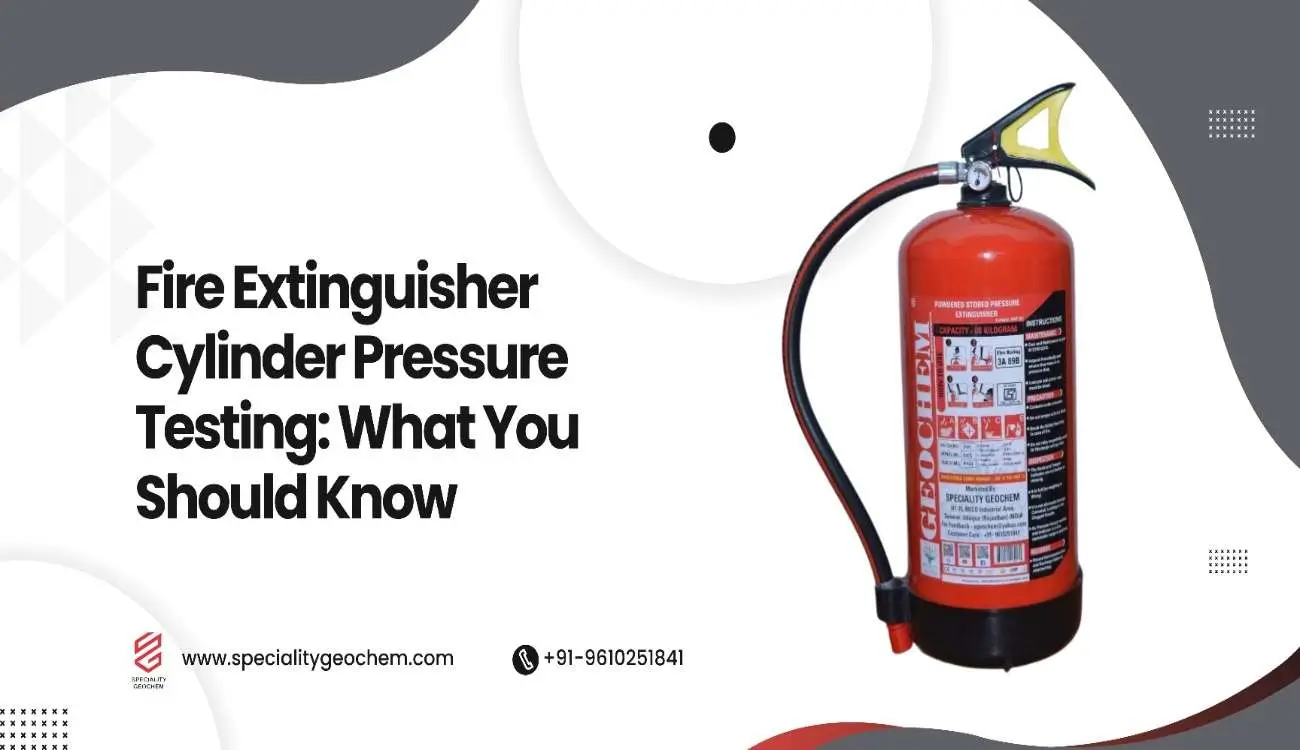Fire extinguishers are our first line of defense against small but potentially devastating fires. However, their reliability depends entirely on one crucial factor — Fire Extinguisher Cylinder Pressure Testing. This testing process ensures that the extinguisher’s cylinder can safely contain the pressurized extinguishing agent without leaks or weaknesses. Neglecting this essential test can result in failure during an emergency, posing risks to both people and property.
In this article, we’ll explore everything you need to know about Fire Extinguisher Cylinder Pressure Testing — from its importance and frequency to the process, regulations, and safety benefits.
What Is Fire Extinguisher Cylinder Pressure Testing?
Fire Extinguisher Cylinder Pressure Testing (also known as hydrostatic testing) is a safety procedure used to assess the strength and integrity of a fire extinguisher’s cylinder. Over time, the internal pressure of an extinguisher can weaken the cylinder walls, leading to potential leaks or ruptures.
During the test, the cylinder is filled with water and subjected to a higher-than-normal pressure to verify that it can safely withstand the required limits. If the cylinder passes this test, it can continue to be used; if not, it must be replaced or scrapped.
Essentially, this test acts as a “health check-up” for the fire extinguisher, ensuring it performs effectively when needed the most.
Why Is Pressure Testing Important?
- Safety Assurance:
A fire extinguisher under pressure can be dangerous if the cylinder fails. Testing ensures the metal can handle high-pressure levels safely. - Legal Compliance:
In India, the Bureau of Indian Standards (BIS) and other fire safety authorities mandate Fire Extinguisher Cylinder Pressure Testing at regular intervals. Failing to comply can result in penalties or invalid fire safety certifications. - Operational Readiness:
Pressure testing guarantees that the extinguisher will discharge effectively during a fire emergency, giving users confidence in its performance. - Cost Efficiency:
Regular testing helps identify weak cylinders early, reducing the risk of costly replacements or accidents.
How Often Should Pressure Testing Be Done?
The frequency of Fire Extinguisher Cylinder Pressure Testing depends on the type of extinguisher and the material of its cylinder:
- CO₂ extinguishers: Every 5 years
- Water, foam, and powder extinguishers: Every 5 to 10 years depending on the manufacturer’s recommendation
- High-pressure cylinders: More frequent checks may be required due to higher operational stress
It’s important to consult the extinguisher’s label or service manual for specific testing intervals and follow your local fire safety regulations.
The Process of Fire Extinguisher Cylinder Pressure Testing
The testing procedure is carried out by certified professionals using specialized equipment. Here’s a step-by-step breakdown:
- Inspection and Preparation:
The extinguisher is first emptied, and internal components are inspected for corrosion, dents, or leaks. - Filling with Water:
The cylinder is filled with water to eliminate the risk of explosion during the test. - Application of Test Pressure:
Using a hydrostatic testing machine, the cylinder is subjected to a pressure higher than its working pressure (usually 1.5 times). - Monitoring:
The cylinder is monitored for any deformation, leaks, or pressure loss during the test. - Evaluation and Marking:
If the cylinder passes, it is stamped with the test date and pressure rating. Failed cylinders are discarded according to safety standards.
This process ensures the fire extinguisher’s cylinder is strong enough to handle real-life emergencies.
Signs That Pressure Testing May Be Needed
Even if your extinguisher is not due for testing yet, there are several signs that indicate it should be inspected sooner:
- Visible rust, dents, or bulging on the cylinder
- Pressure gauge showing abnormal readings
- Hissing sound or signs of gas leakage
- Missing test label or unclear markings
Ignoring these warning signs could lead to failure during an actual fire incident.
Regulations and Standards
In India, Fire Extinguisher Cylinder Pressure Testing must comply with:
- IS 2190:2010 (Selection, Installation, and Maintenance of First-Aid Fire Extinguishers)
- Bureau of Indian Standards (BIS) safety protocols
- National Building Code (NBC) of India fire safety guidelines
Additionally, industries and commercial buildings are required to maintain a record of fire extinguisher maintenance and testing reports, verified by authorized agencies.
Benefits of Regular Pressure Testing
- Improved Reliability: Ensures extinguishers function properly in an emergency.
- Extended Lifespan: Prevents corrosion and material fatigue.
- Regulatory Compliance: Keeps your premises legally protected.
- Peace of Mind: Confirms safety systems are operational and secure.
- Enhanced Workplace Safety: Reduces the risk of fire-related injuries or damage.
Regular Fire Extinguisher Cylinder Pressure Testing not only enhances the safety of your property but also promotes a culture of preparedness.
Professional Testing Services
While some minor inspections can be done in-house, pressure testing must always be handled by trained professionals with certified equipment. Companies like Speciality Geochem specialize in advanced fire safety solutions, including Automatic Fire Suppression Tube Systems, Fire Extinguisher Balls, and professional Fire Extinguisher Cylinder Pressure Testing services.
Their experienced technicians ensure your fire extinguishers are fully compliant with Indian fire safety regulations and ready for any emergency.
Tips for Maintaining Fire Extinguishers
- Conduct monthly visual inspections for leaks, corrosion, or damage.
- Ensure the pressure gauge remains in the green zone.
- Keep extinguishers mounted in accessible areas.
- Record each inspection and service date clearly.
- Replace extinguishers after 10–12 years or if damaged beyond repair.
Conclusion
Regular Fire Extinguisher Cylinder Pressure Testing is not just a legal requirement—it’s a life-saving practice. Whether at home, in offices, or industrial facilities, ensuring that your fire extinguishers are pressure-tested and certified can prevent catastrophic failures during emergencies.
By partnering with professional fire safety experts like Speciality Geochem, you can ensure every cylinder meets the highest safety standards, offering reliable protection when every second counts.

